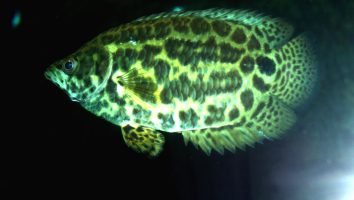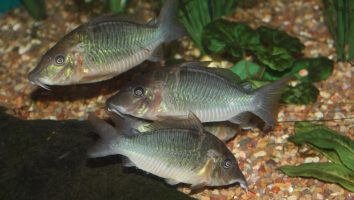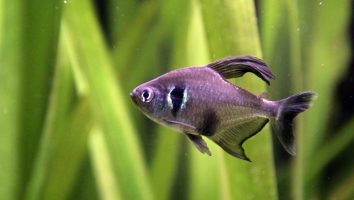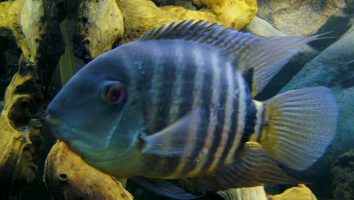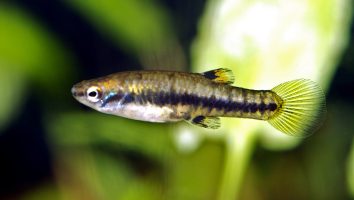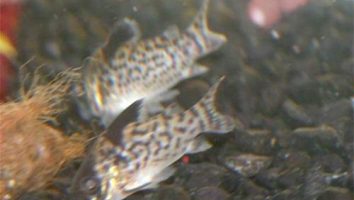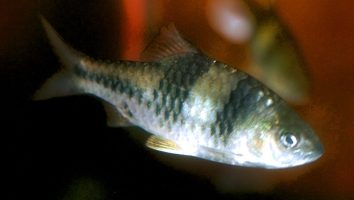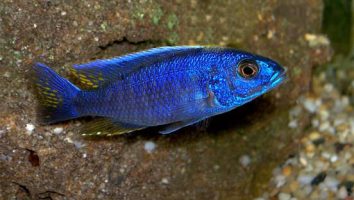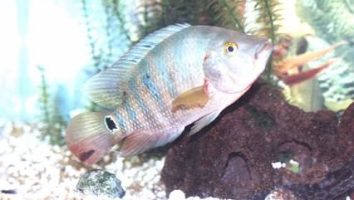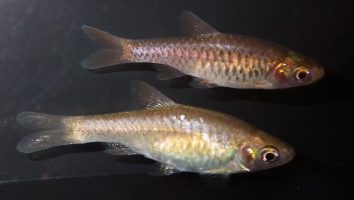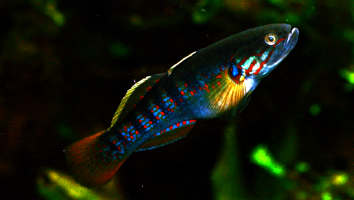The pygmy sunfish is a beautiful and unique freshwater fish that is perfect for any aquarium.
This guide will teach you everything you need to know about pygmy sunfish care. You’ll learn about their diet, size, lifespan, and more!
Table of contents
Species overview
The pygmy sunfish (scientific name: Elassoma okatie) is a very small freshwater fish that’s found in the southeastern United States.
They prefer slow-moving waters with a lot of vegetation. This could be in the form of ponds, lakes, or even slow-moving rivers.
This fish is very peaceful and is often found in schools. They are compatible with a wide variety of other fish, which makes them a great choice for community tanks.
The pygmy sunfish is a very small fish, which is one of the main reasons why they’re so popular. They only grow to be about 1-2 inches in length, which makes them one of the smallest freshwater fish out there.
Appearance
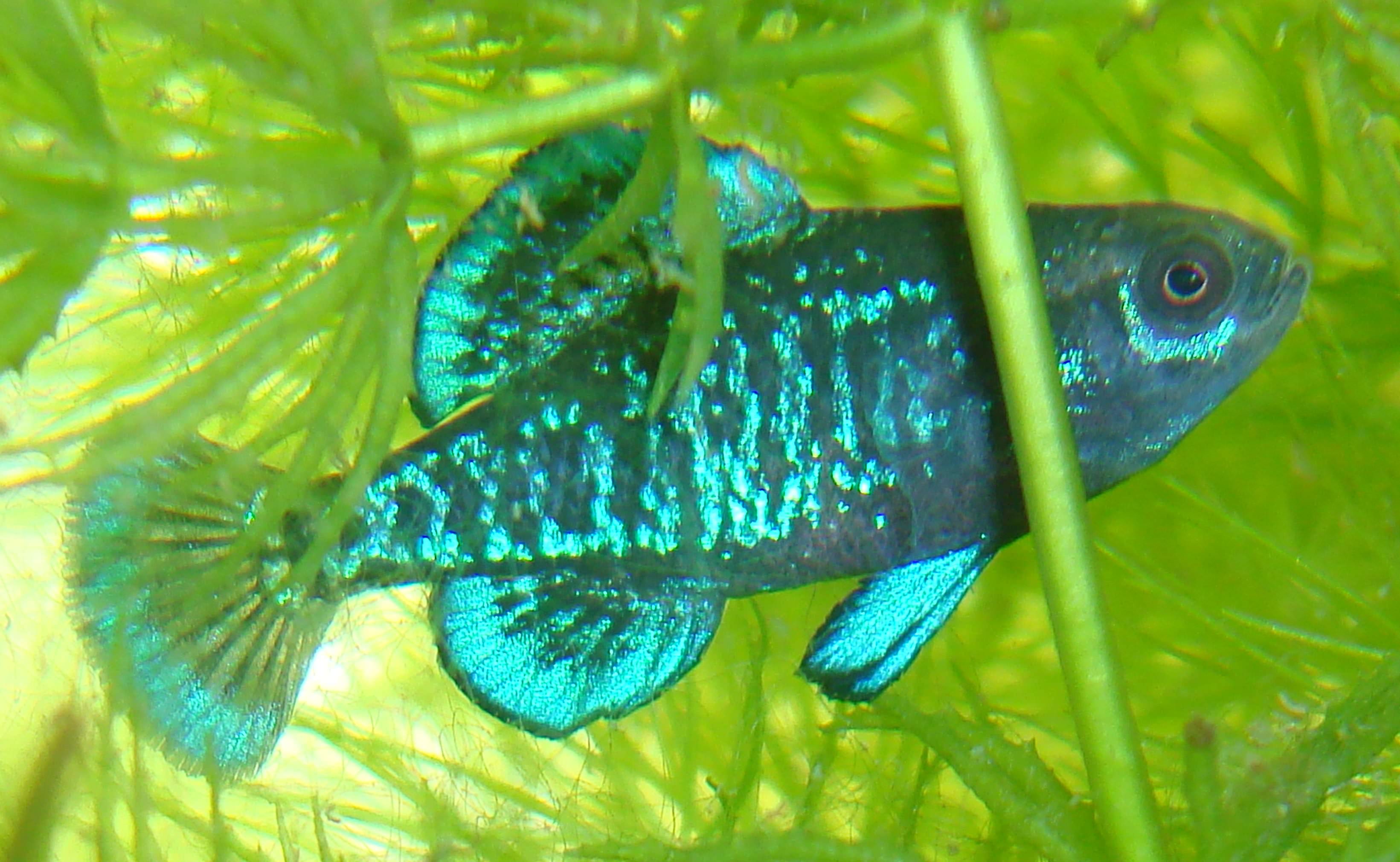
The first thing you’ll notice about this species is their small size. They only grow to be about an inch or two long!
Their bodies are very thin and torpedo-shaped. Their fins are all very small and delicate looking. The dorsal and anal fins are both short and placed far back on their bodies.
They have a forked caudal fin that’s slightly taller than their body is wide.
These fish are a beautiful blue color all over their bodies. The males tend to be a bit more colorful than the females. They also have a dark stripe that runs from the base of their dorsal fin all the way to the tip of their caudal fin.
This stripe is much more prominent in males than females. Males also have a dark spot on their dorsal fins that’s not as common in females.
Lifespan
The lifespan of a pygmy sunfish in the wild is unknown. However, in captivity, they have been known to live for 3 to 5 years.
Size
The maximum size for a pygmy sunfish is 1.5 inches.
Tank
Tank Size
The minimum tank size for pygmy sunfish is 10 gallons. If you’re looking to keep a school of these fish, you should add an additional 2-3 gallons per fish.
Ideally, you should have a 20 gallon tank if you’re looking to keep a small school of 3-5 pygmy sunfish. This tank size will also give you some flexibility to add a few more fish or some invertebrates if you’re looking to create a more diverse aquarium.
Water Parameters
These little fish come from slow-moving streams and rivers in the southeastern United States. The water is typically stained due to tannins leaching from the surrounding vegetation.
This gives the water a bit of a yellow or tea-colored appearance. The pH is usually on the acidic side and the water is soft to slightly hard.
In terms of temperature, pygmy sunfish can tolerate a wide range. They’re found in waters that range from the mid-60s to the mid-80s.
Here are a few water parameters to help you create a healthy environment for your pygmy sunfish.
- Water Temperature: 60-85 degrees Fahrenheit
- pH Levels: 6.0-7.8
- Water Hardness: 2-12 dGH
- Alkalinity Levels: 4-8 dKH
What To Put In Their Tank
Pygmy sunfish are a bit different when it comes to their habitat. They come from fast-moving waters so they’re used to a lot of turbulence.
You’ll need to provide them with a tank that has a strong filter to recreate this environment. We recommend using a canister filter for this purpose.
In terms of the substrate, these fish don’t have any specific requirements. You can use gravel, sand, or even a bare-bottom tank if you wish.
As for decorations, you can get creative here. Pygmy sunfish love to hide so anything that provides them with some cover will be greatly appreciated. Driftwood, rocks, and plants all make great choices.
Just be sure to avoid anything that has sharp edges. These fish are small and delicate so anything that could potentially injure them should be avoided.
Common Diseases
The Pygmy sunfish is a hardy little fish that doesn’t often get sick. However, there are a few diseases that they can fall victim to if they’re not properly cared for.
The most common illness that these fish experience is ich. This is a disease that’s caused by a parasite and it’s very contagious. It’s also pretty easy to spot since it manifests itself as white spots on the body of your fish.
If you notice ich, it’s important to take action immediately. There are a variety of ich treatments available, but the sooner you start treatment the better.
Another disease to look out for is hole-in-the-head disease. This is caused by poor water quality and the presence of activated carbon in your tank. It presents itself as, you guessed it, holes in the head of your fish.
This disease is pretty easy to treat as well, but it’s important to catch it early. If you wait too long, the holes can become infected and lead to other serious problems.
As always, the best way to prevent these diseases is to maintain a clean and healthy environment for your fish. If the water quality in your tank is good, your fish will be much less likely to get sick.
Behavior & Temperament
Pygmy sunfish are very shy and reclusive fish. They spend most of their time hiding in the plants and rocks of their environment.
It’s not uncommon for aquarists to go months without seeing their Pygmy sunfish. This is perfectly normal behavior. In fact, it’s one of the things that make these fish so unique.
Although they’re not the most social creatures, Pygmy sunfish do interact with others of their own kind on occasion. When they do, it’s usually in a very calm and non-aggressive manner.
Pygmy sunfish are also known to be good jumpers. So, if you have one of these fish, it’s important to make sure your tank is covered.
Tank Mates
There are a few things to consider when picking tank mates for pygmy sunfish.
First, these fish come from slow-moving waters in the southeastern United States. This means that they’re not used to a lot of movement in their environment.
As a result, it’s best to avoid fish that are known to be fast swimmers. Not only will this make your pygmy sunfish feel stressed, but it could also make it difficult for them to find food.
Secondly, pygmy sunfish are small. This means that they can easily become prey for larger fish.
To avoid this, it’s best to choose tank mates that are either too large to fit in their mouths or that are also small and peaceful.
Some good pygmy sunfish tank mates include:
- Ghost shrimp
- Cherry shrimp
- Otocinclus catfish
- Pygmy Corydoras
- Dwarf gouramis
- Guppies
- Mollies
Breeding
Pygmy sunfish are very easy to breed in captivity, as they will do it all on their own! All you need to do is provide them with the right habitat and water conditions and they will take care of the rest.
Identifying males and females can be a bit tricky, as they all have similar colors. The best way to tell them apart is by looking at their fins. Males have longer fins, while females have shorter fins.
This species needs to be at least a year old before you can consider breeding them. Once they’ve reached that age they’ll get right to it!
You don’t need to make any changes to the water temperature (although some breeders prefer to aim for the higher end of their normal range). In fact, there isn’t much for you to do until the fry have hatched!
Females will lay their eggs in an area of the tank that the male has claimed. Once the eggs have been laid and fertilized, the males will guard them and clean the area.
After the eggs have hatched it’s recommended to remove the adults and begin feeding the fry baby brine shrimp.
Conclusion
The Pygmy Sunfish is an excellent choice for a beginner fish keeper. They’re very easy to care for and don’t require a lot of attention.
This fish is also a great choice for someone who wants a low maintenance fish that is still beautiful to look at.
If you’re looking for a fish that is easy to care for and still stunning, the Pygmy Sunfish is a great choice!

